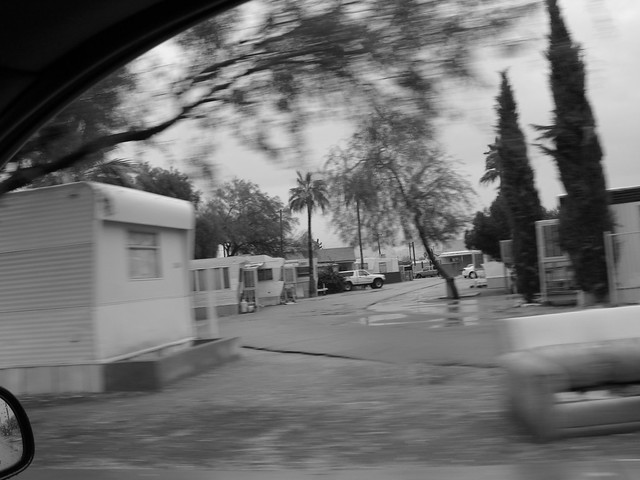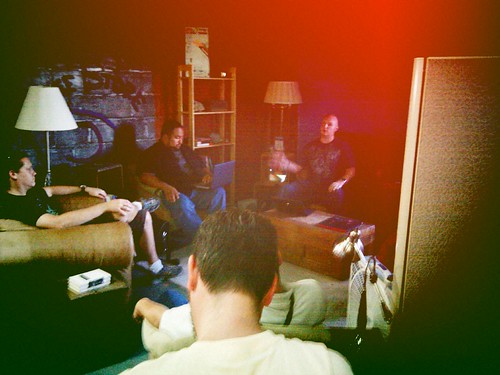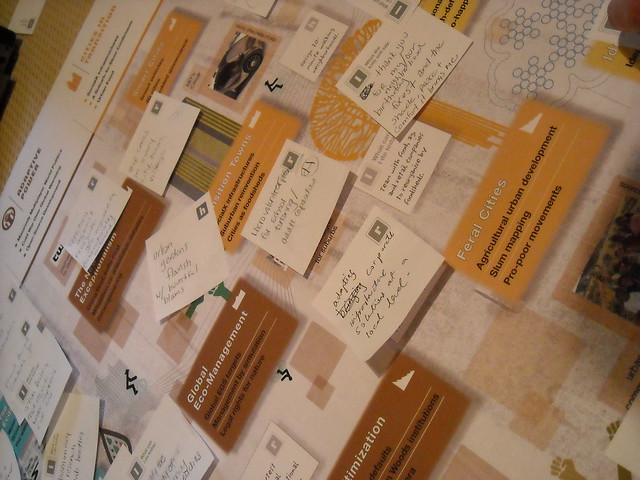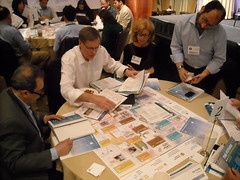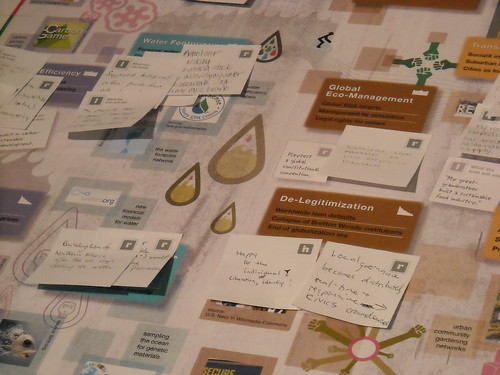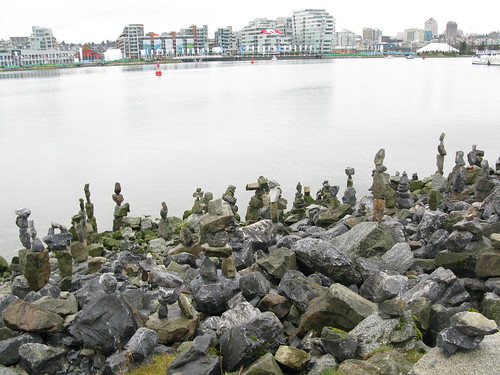 |
| "Meanie". Originally posted at www.onlinepot.org |
What Daniel (following Michael Mehaffy) is spotting is the long-standing Hegelian allure for "mashing" agronomy and urbanism as evidenced by American intellectuals hankering for Wright's (Jeffersonian) Usonia. I would add Corbu's centralized (Hamiltonian) Voisin plan to the list. While, in the fist-fight between these modernist utopias (or "paradises", as William McClung appropriately calls them),Wright's model apparently proved victorious in the last half-century, Voisin has never really left us either (and, in fact, as Witold Rybczynski points out in Makeshift Metropolis, Wright's own oeuvre did not evade it either).
Might the garden + city movements, in their various ideological camps and manifestations, essentially be a part of the American cultural condition? Wright's nativist idealism may be an irreducible part of our American mental model for ideal living, as American as cranberry sauce, even if hardly any Americans ever own a pair of overalls. This much Wright got right about his fellow Americans. To swing our urbanist scimitars at American Gothic, like Corbu did, would be to alienate us forever from our fellow Americans (Canadians too) and that would do us no good. We designers then have no choice, essentially, but to shrug our shoulders and try to sublimate it.
Full disclosure: I am myself a product of the academy, which, though we never claim it outright, holds the movement towards a landscape urbanism, or landscape + urbanism, if you will, with a venerable light not reserved for New Urbanism. Vehemently so. But, at least I will admit here that my love for landscape+city+semiotics is essentially a romantic one (er..., blushing evidence here and here). I am, yes, aware that the way we use landscape (for recreation, ecological regeneration, or agriculture) is primarily a cultural question that the designer can engage (and perhaps influence) but never quite control. All design, let's face it, is a utopia. The reason that landscape urbanism appeals to us urban designer types is the way it engages the fourth dimension in the planning challenge, in pointing us to the ecological and changing conditions of the city. It is a relaxed and appealing view of urbanism. Sometimes, it too loses track of society and reality and economics, but that's design. That's life in fact.
While I don't consider Wright's "democracy in overalls" essentially realistic, I have always admired how robust and undiluted in spirit Wright's infrastructural vision was. People seem to miss this subtle attribute of Usonia. I would like them to squint more carefully at the models and notice that Wright's Usonian roads, bridges, and ramps are nothing like the flimsy and dispersed and decapitated infrastructure of today's suburb. The suburb has never replicated the soaring infrastructural heart of Usonia, grided and resilient and direct and exorbitantly expensive as it was relative to what it served. This is not the amorphous and flimsy and branched infrastructure of today's suburb. That is the constant mistake of urbanist paradises: to essentially get the economics wrong at the outset. They always have to transmogrify to lesser versions of themselves. Simply, Usonia can not support that kind of dispersed infrastructure with an agricultural-based economy of one acre per farmer. Wright's Usonia was never replicated because it made no industrial sense whatsoever. It did not scale. The problem with landscape/agronomic urbanism since Wright and Corbu has always been that sticky implementation piece. Van Valkenburgh's wilderness in the wharf and New Urbanism's Serenbe, GA are sort of our alternative responses to this problem. One focuses on implementation with high-stakes public projects and one takes advantage of Americans' market preference to seek out a quietude in (essentially suburban or small town) community life. Both of these responses seem somewhat limited and situated and ineffectual blips. But what is the alternative? How else do you support agriculture at an industrial scale in the urban fabric that makes sense? What is the soft (social and market) infrastructure that you need?
So, while I'm at it, let me point out one place where I do see Jeffersonian Usonia as feasible in an industrial scale. That is in the anti-federalist pot-growing communities that are now forming in the edges of urbanized California. Essentially, what you have in Cali is a great condition for a great resurgence in a "democracy in overalls" which actually gives economic incentives for agronomic production with small-scale farms. Watch, oh fearful planner, what happens when Cali eventually adopts the "100 square feet" per grower rule. Suddenly, you have the economic leverage you need for single families to buy up those foreclosed homes in the Valley's grided landscape, which seems ready-made for the spirited Usonian infrastructure of Wright's vision. Taliesin West Bakersfield!











